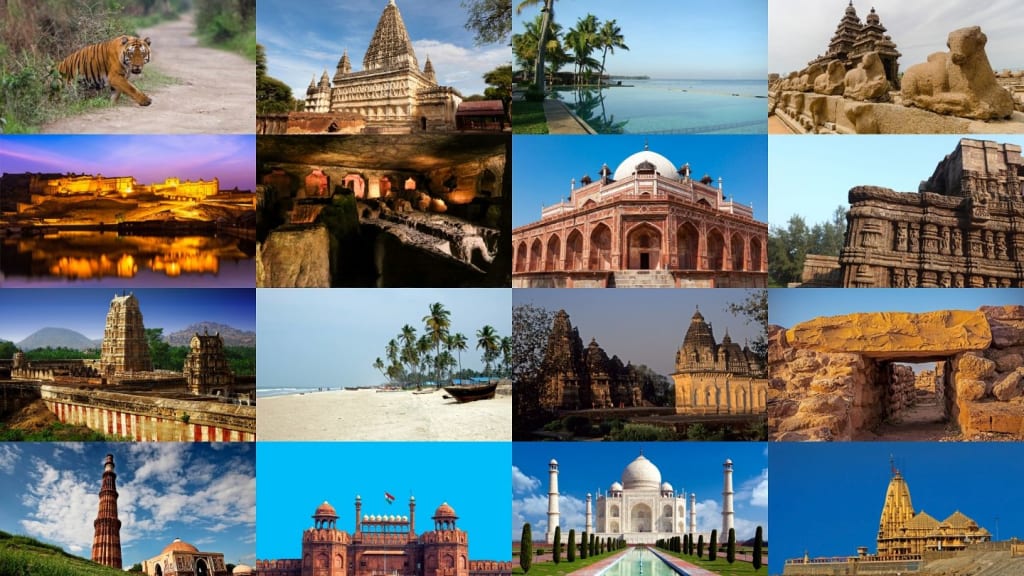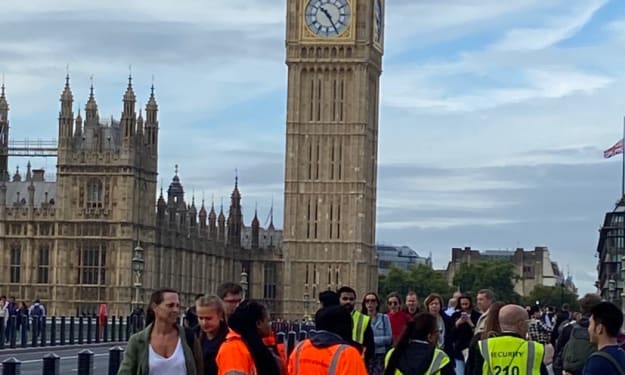15 Popular Buddhist Sites in India
Discovering the Sacred Landmarks of Buddhism in India

India, the birthplace of Buddhism, is adorned with a plethora of sacred sites that hold immense significance for Buddhist pilgrims and enthusiasts alike. From ancient monasteries nestled in serene Himalayan valleys to magnificent stupas standing as testaments to the faith's profound teachings, each site carries a unique story of enlightenment and spiritual journey. Let's embark on a virtual pilgrimage to 15 popular Buddhist sites in India, where history, culture, and spirituality converge to create an awe-inspiring experience.
Bodh Gaya, Bihar
- Bodh Gaya stands as the holiest pilgrimage site for Buddhists worldwide, marking the place where Siddhartha Gautama attained enlightenment under the Bodhi tree.
- The Mahabodhi Temple, a UNESCO World Heritage Site, is the focal point, housing the sacred Bodhi tree and the Vajrasana, the Diamond Throne, where Buddha meditated.
- Pilgrims from across the globe visit Bodh Gaya to meditate, offer prayers, and participate in various rituals, experiencing the essence of Buddhist teachings.
Sarnath, Uttar Pradesh
- Located near Varanasi, Sarnath is where Buddha delivered his first sermon after attaining enlightenment, known as the Dhammacakkappavattana Sutta.
- The Dhamek Stupa, built by Emperor Ashoka, marks the spot where Buddha taught his first disciples the Four Noble Truths and the Eightfold Path.
- The site also houses the Mulagandha Kuti Vihar, containing frescoes depicting Buddha's life, attracting pilgrims and scholars interested in Buddhist art and history.
Kushinagar, Uttar Pradesh
- Kushinagar is the place where Buddha attained Mahaparinirvana, or final enlightenment, and passed away.
- The Mahaparinirvana Temple houses a reclining Buddha statue, symbolizing the peaceful departure of the enlightened one into Nirvana.
- Pilgrims visit Kushinagar to pay their respects, reflect on impermanence, and contemplate the teachings of death and liberation.
Lumbini, Nepal (Near Indian Border)
- Lumbini, situated near the Indian border in Nepal, is the birthplace of Siddhartha Gautama, the historical Buddha.
- The Maya Devi Temple marks the exact spot where Queen Maya gave birth to Prince Siddhartha, who later became Buddha.
- Pilgrims visit Lumbini to explore the sacred garden, monastic ruins, and the Ashoka Pillar, erected by Emperor Ashoka to commemorate Buddha's birth.
Ajanta and Ellora Caves, Maharashtra
- The Ajanta and Ellora Caves, UNESCO World Heritage Sites, showcase exquisite Buddhist rock-cut architecture and ancient cave paintings dating back to the 2nd century BCE.
- Ajanta Caves depict Jataka tales, stories from Buddha's previous lives, while Ellora Caves feature monasteries, temples, and stupas representing various Buddhist traditions.
- These caves serve as remarkable repositories of Buddhist art and philosophy, drawing visitors to marvel at their artistic grandeur and spiritual significance.
Nalanda, Bihar
- Nalanda was a renowned center of learning and Buddhist scholarship in ancient India, housing Nalanda University, one of the world's earliest universities.
- Scholars and monks from distant lands flocked to Nalanda to study Buddhist philosophy, mathematics, astronomy, and other disciplines.
- The ruins of Nalanda University stand as a testament to India's rich intellectual heritage and its profound influence on the spread of Buddhism across Asia.
Sravasti, Uttar Pradesh
- Sravasti holds significance as the place where Buddha spent 24 rainy seasons, delivering numerous discourses and miraculous teachings.
- The Jetavana Monastery, gifted by wealthy merchant Anathapindika, was one of Buddha's favorite retreats in Sravasti.
- Pilgrims visit Sravasti to explore ancient monastic ruins, meditate in tranquil surroundings, and immerse themselves in Buddha's teachings on compassion and wisdom.
Rajgir, Bihar
- Rajgir served as an important retreat for Buddha during the rainy season and witnessed several important events in his life, including the first Buddhist council.
- The Griddhakuta Hill, or Vulture's Peak, is where Buddha delivered many profound discourses, including the Heart Sutra.
- Pilgrims ascend the hill to visit the Japanese-built Vishwa Shanti Stupa, offering panoramic views of Rajgir and reflecting on the teachings of peace and enlightenment.
Vaishali, Bihar
- Vaishali is steeped in Buddhist history, being the birthplace of Lord Mahavira, the founder of Jainism, and the location of Buddha's famous "Monkey Grove" discourse.
- The Relic Stupa at Kolhua commemorates Buddha's last sermon, while the Ananda Stupa enshrines the mortal remains of Ananda, Buddha's disciple.
- Pilgrims visit Vaishali to explore archaeological sites, reflect on Buddha's teachings on non-attachment and impermanence, and pay homage to ancient stupas and monasteries.
Dharamshala and McLeod Ganj, Himachal Pradesh
- Dharamshala and McLeod Ganj serve as the seat of the Tibetan government-in-exile and the residence of His Holiness the 14th Dalai Lama.
- The Tsuglagkhang Complex houses the Namgyal Monastery, the Dalai Lama's temple residence, and the Tibet Museum, offering insights into Tibetan culture and spirituality.
- Pilgrims flock to Dharamshala to receive teachings from the Dalai Lama, participate in meditation retreats, and engage in social welfare projects supporting the Tibetan community.
Tawang Monastery, Arunachal Pradesh
- Tawang Monastery, perched atop a hill at an altitude of 10,000 feet, is the largest Tibetan Buddhist monastery in India.
- Founded by Merak Lama Lodre Gyatso in the 17th century, the monastery is renowned for its stunning architecture, intricate murals, and vast library of sacred texts.
- Pilgrims visit Tawang to witness colorful festivals like Losar and Torgya, receive blessings from resident monks, and soak in the serene mountainous landscapes of Arunachal Pradesh.
Rumtek Monastery, Sikkim
- Rumtek Monastery, also known as the Dharma Chakra Centre, is a prominent seat of the Kagyu lineage of Tibetan Buddhism.
- Built in the 16th century by the 9th Karmapa Wangchuk Dorje, the monastery houses ancient relics, thangka paintings, and a golden stupa containing the remains of the 16th Karmapa.
- Pilgrims visit Rumtek to participate in religious ceremonies, receive teachings from eminent lamas, and embark on treks to nearby hermitages and sacred sites.
Hemis Monastery, Ladakh
- Hemis Monastery, nestled in the scenic landscapes of Ladakh, is the largest and wealthiest monastery in the region.
- Founded in the 17th century by Stagtsang Raspa, a disciple of the renowned Tibetan sage Naropa, the monastery celebrates the colorful Hemis Festival.
- Pilgrims flock to Hemis to witness the masked cham dances, receive blessings from the Hemis Rinpoche, and explore the monastery's museum showcasing rare artifacts and thangka paintings.
Tabo Monastery, Himachal Pradesh
- Tabo Monastery, often referred to as the "Ajanta of the Himalayas," is one of the oldest continuously operating Buddhist monasteries in the Indian Himalayas.
- Founded in 996 CE by the Tibetan scholar Rinchen Zangpo, the monastery boasts exquisite frescoes, ancient murals, and a rich collection of scriptures and artifacts.
- Pilgrims visit Tabo to marvel at its ancient architecture, participate in meditation retreats, and witness the annual Tabo Tog-Lham festival celebrating the victory of good over evil.
Bodhisattva Trail, Ladakh
- The Bodhisattva Trail in Ladakh encompasses several sacred sites associated with Padmasambhava, the legendary Indian guru who introduced Buddhism to Tibet.
- Key sites include Alchi Monastery, Lamayuru Monastery, and Likir Monastery, each offering insights into Tibetan Buddhist art, culture, and spirituality.
- Pilgrims trek along the Bodhisattva Trail to pay homage to Padmasambhava, receive teachings from resident lamas, and immerse themselves in the mystical landscapes of Ladakh.
Conclusion
India's landscape is adorned with a tapestry of Buddhist sites, each weaving together tales of enlightenment, compassion, and wisdom. From the sacred precincts of Bodh Gaya to the remote Himalayan monasteries of Ladakh, these sites serve as beacons of spiritual inspiration and cultural heritage, inviting pilgrims and travelers to embark on a journey of self-discovery and enlightenment. This rich array of destinations forms the quintessential Buddhist Tour in India, offering seekers of truth and spirituality an opportunity to immerse themselves in the teachings and legacy of the Buddha. As we traverse these hallowed grounds, may we find solace in the timeless teachings of the Buddha and cultivate compassion and peace in our hearts and minds.
About the Creator
travelworldplanet
Travel World Planet is a best place and top destination to find out different facts and answers for your curiosities.





Comments
There are no comments for this story
Be the first to respond and start the conversation.